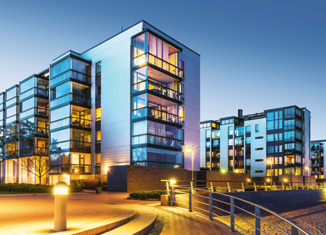The prospects of the 900 most important city economies around the world have been analysed by Oxford Economics (OE) in its latest annual Global Cities report. The firm concluded that it expects the present slowdown in the global economy to persist into next year and this is now having a significant impact on growth in the world’s major cities and their prospects.
Of the top 900 cities around the world, 586 will experience slower growth in the period 2020-21 than they enjoyed during the past five years – in some cases, very markedly slower, with growth rates of some key cities halved or more, according to the report.
The effects on cities are felt across regions worldwide. OE reports: “Our forecasts show that 76 of the top 98 North American cities will see slower GDP growth in 2020-21 than in 2015-19; 156 of the top 232 European cities will do so; and no less than 146 of the 150 mainland Chinese cities, as well as 122 of the 185 non-Chinese Asian cities. In Latin America the figure is 41 of 104 cities, while in the Middle East and Africa it is 45 out of 131 cities.”
Marked city slowdowns to hit the US urban growth stars of West Coast and South
Some of the most marked slowdowns projected for major cities are in the US, which features three of the 10 largest slowdowns projected. Notably, San Jose, the centre of Silicon Valley, is projected to see its growth rate in 2020-21 more than halve to a projected 3.3%, down from the buoyant 7.6% average annual pace of expansion over 2015-19.
However, San Francisco is still expected to remain the fastest growing of North America’s 10 largest cities over the 2020-21 period, with projected expansion of 2.4%, even if this will be sharply lower than the 5% rate from 2015-19. And Dallas is not far behind in 2020-21, with forecast growth of 2.2% (down from 3.4% in 2015-19).
New York remains the biggest city in the US and worldwide, and notably its growth of 1.8% in 2020-21 is expected to match the rate seen over the 2015-2019 period. Its West Coast rival, Los Angeles, is expected, by contrast, to see growth slow by 0.9 percentage points over the next two years, to 2%, compared with the 2.9% rate of the previous five years.
In Europe, Berlin, Munich and Amsterdam to see sharply slower growth
Regarding Europe, OE says that Eastern European cities will continue to set the pace as they have for the past decade as lower costs have attracted inward investment. It adds: “Of the 10 largest European city economies by GDP, we expect the sharpest growth slowdowns in 2020-21 to be in Berlin, where growth is forecast at 1.6%, half the rate of the previous five years, and in Amsterdam, with growth also set to halve to 1.5%, from 3.1%. Notably slower growth is also projected in Madrid (1.9% vs 3.2%), Munich (1.4% vs 2.6%), Istanbul (3.5% vs 4.6%) and Hamburg (1.0% vs 1.9%).
“London, having seen its growth fall sharply in recent years, should now see a modest improvement in economic performance in the next two years, performing broadly in line with other major cities.”
Regarding the capital, the report says that the beginning of London’s slowdown coincided with the UK’s decision to leave the EU, and Brexit has clearly created much uncertainty. But there have been other factors at work. London’s productivity growth pre-recession was particularly good compared to the capital cities of France, Spain and Germany, but since then has slowed into line; London’s financial services sector has been struggling for some time; and the business services sector has almost certainly been hit by the global trade slowdown.
China to see slowdown in its leading cities after past rapid expansion
The city growth story of the first decade of this century was dominated by Chinese cities, with the largest four metropolitan areas (Shenzhen, Beijing, Guangzhou and Shanghai) among many that grew by more than 10% a year. However, growth rates in these major centres and in other Chinese cities are now slowing, as China’s economy cools.
The report adds: “Among the 10 largest Asian cities by GDP, we project the largest slowdowns in the next two years to come in Chongqing, with growth set to fall to 6.0% from 8.7% in the prior five years and in Shenzhen, with 6.3% growth compared with 7.9%. Guangzhou will also slow sharply, to 6.1% in 2020-21 from 7.6% over 2015-19. Shanghai’s growth is set to slow to 5.9% from 6.7% and Beijing’s to 6.1% from 6.7%.”
However, India’s cities continue to boom and set the pace for the fastest growing cities in the world, although none yet make the top 10 global cities ranked by GDP. The report concludes: “Looking over the next 15 years, we expect the outperformance of Asian cities, on aggregate, to continue, such that by 2035, their total GDP will overtake that of European and North American cities combined.”




















